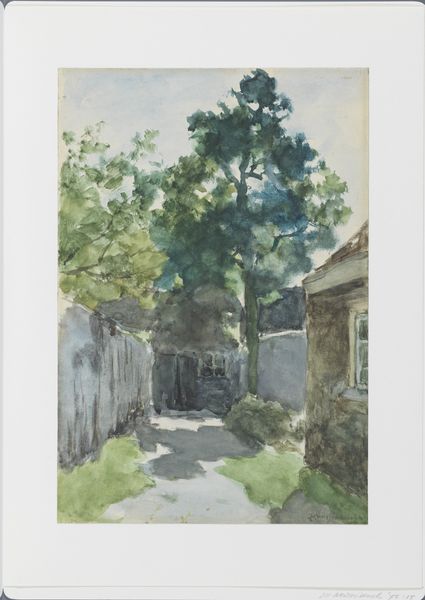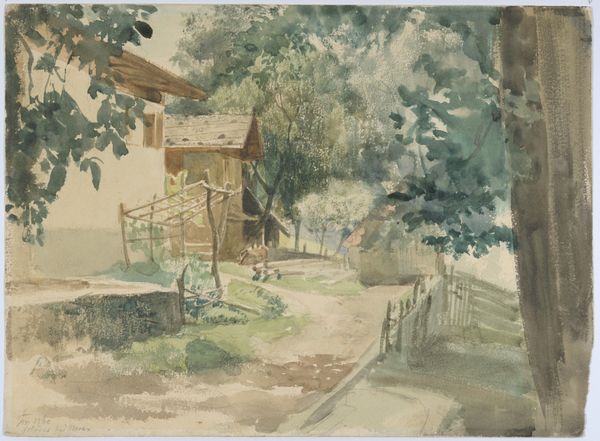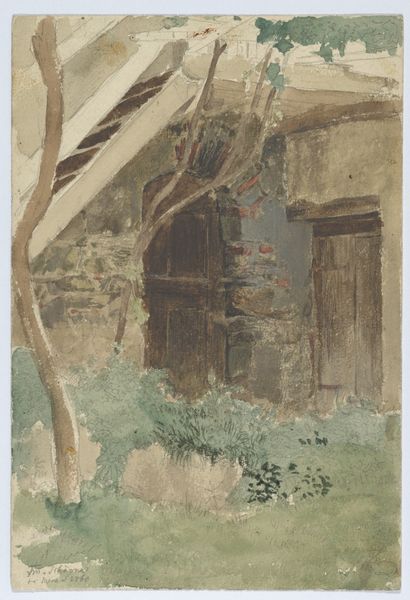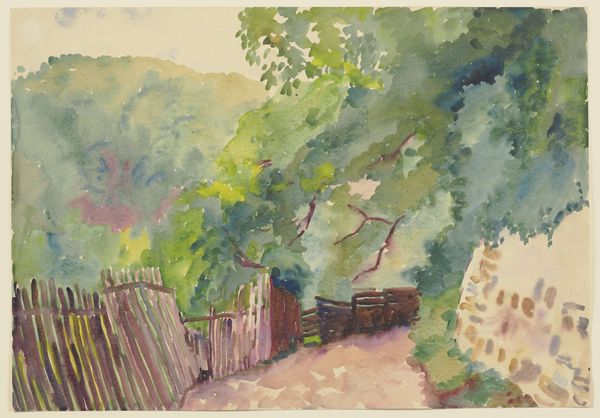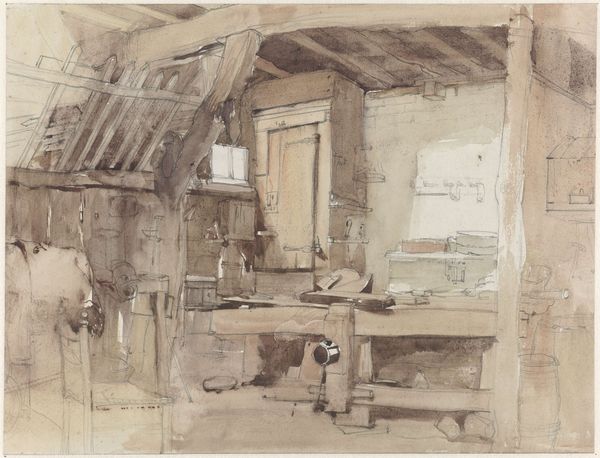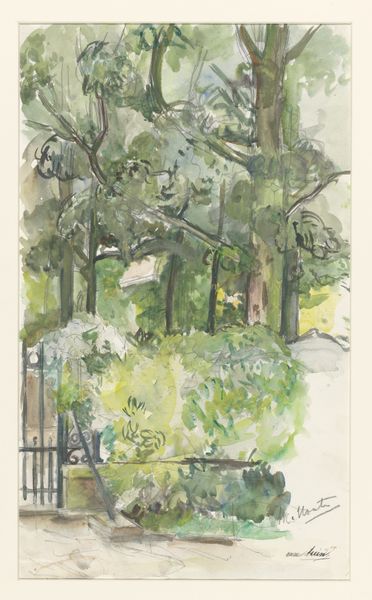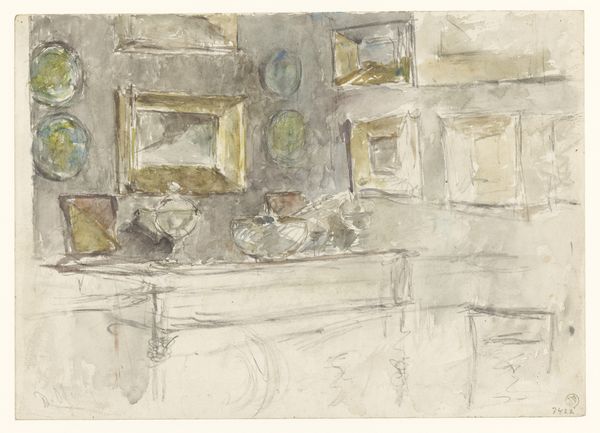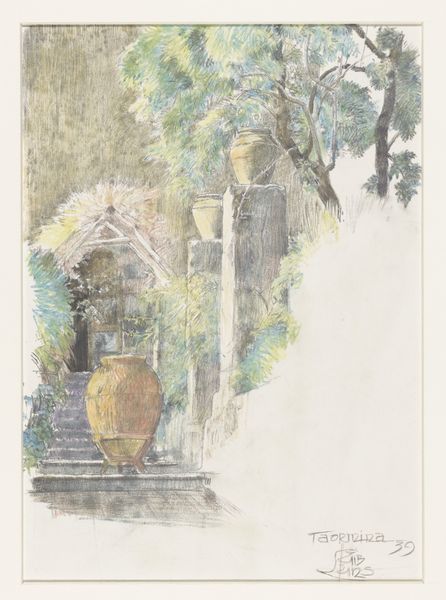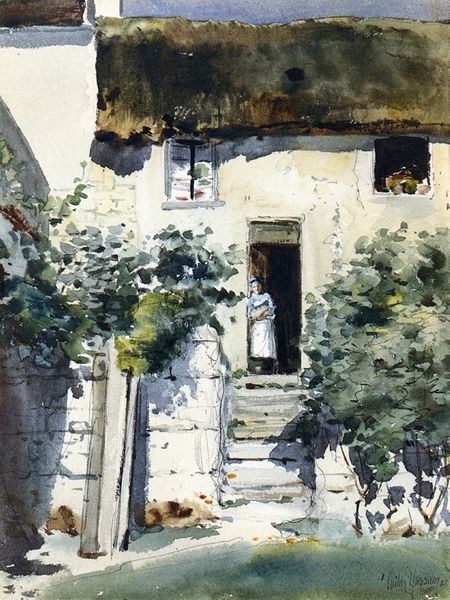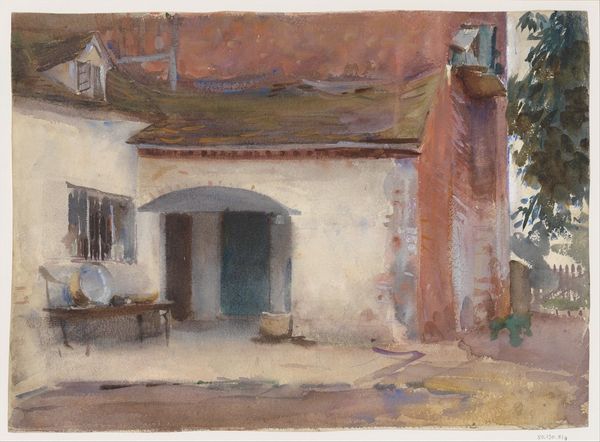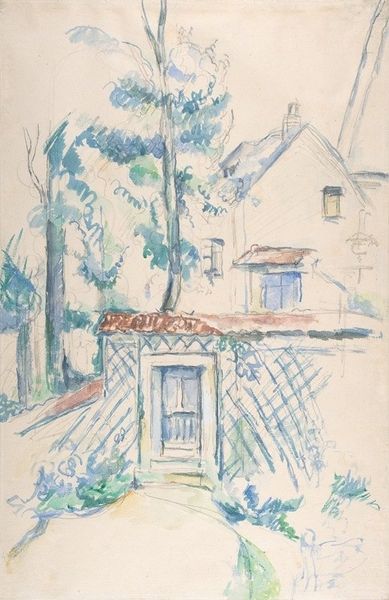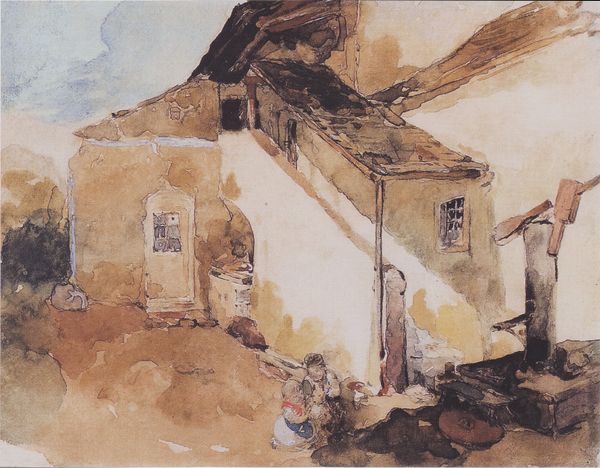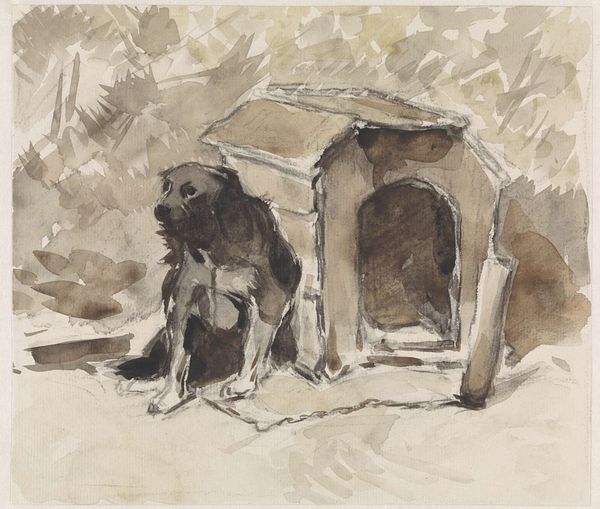
Dimensions: 10 x 7 in. (25.4 x 17.78 cm)
Copyright: Public Domain
Curator: This watercolor on paper, attributed to Walter Shirlaw and titled "Rothenberg", transports us to a quiet, perhaps romanticized, 19th-century European village scene. Editor: My first impression is that it feels fleeting, like a memory fading at the edges. The palette is subdued, and there's a softness in the rendering that suggests transience. Curator: Indeed. Shirlaw was deeply influenced by his time in Munich, absorbing the artistic approaches favored at the academy there, including plein-air sketching. Consider this work within the context of American artists seeking training abroad to later inject European styles into American art institutions. Editor: Looking at the structure, the eye is drawn upward by a fairly strong diagonal, starting with the ducks in the foreground and tracing the rooftops above, yet it also feels incredibly flat—something accentuated by the use of watercolor. Curator: Observe the scene: a rustic building, perhaps an inn, draped with vines. The presence of the chickens and ducks grounds the image in the everyday life of a rural community, speaking to shifting representations of labor and leisure at this time. Editor: It is interesting how the window and what appears to be a blocked doorway create this visual puzzle. Is this simply a transcription of observed forms or an interest in something else, a subtle study of textures perhaps? Curator: Shirlaw straddled the line between academic tradition and burgeoning modernism. This drawing reflects his commitment to capturing the visual truths of his subjects. It offers a sanitized vision of rural life in post-industrial Europe. Note also, that at the time this piece was completed there was a fascination in the United States for German architecture, landscape, and art. Editor: Ultimately, it’s the interplay of light and shadow that intrigues me most—how the washes of color define form and evoke such a tangible sense of atmosphere. Curator: For me, "Rothenberg" is a document of Shirlaw's artistic journey, reflecting a moment where American artistic identity was actively being shaped through interactions with European art, education and philosophy. Editor: A moment perfectly encapsulated in this gentle dance between realism and fleeting impression.
Comments
No comments
Be the first to comment and join the conversation on the ultimate creative platform.
